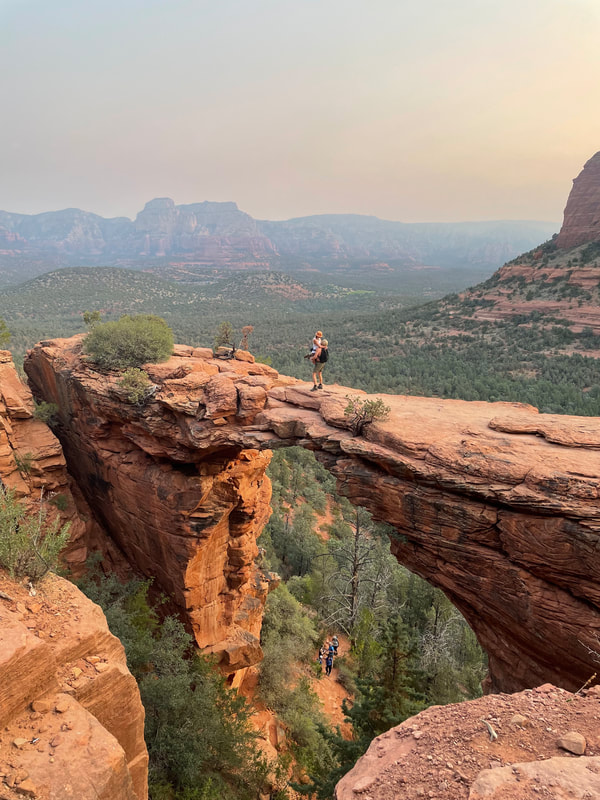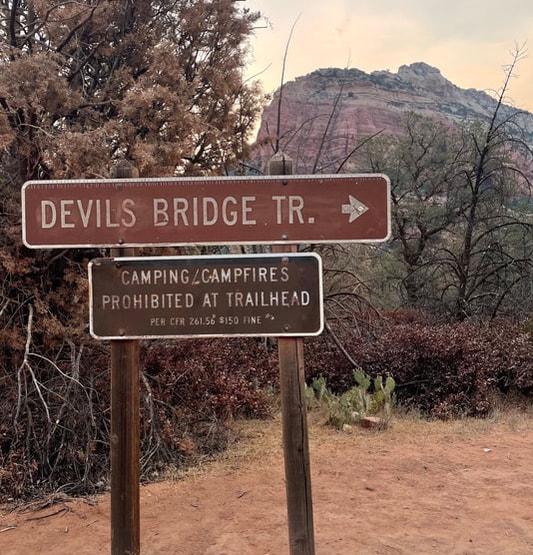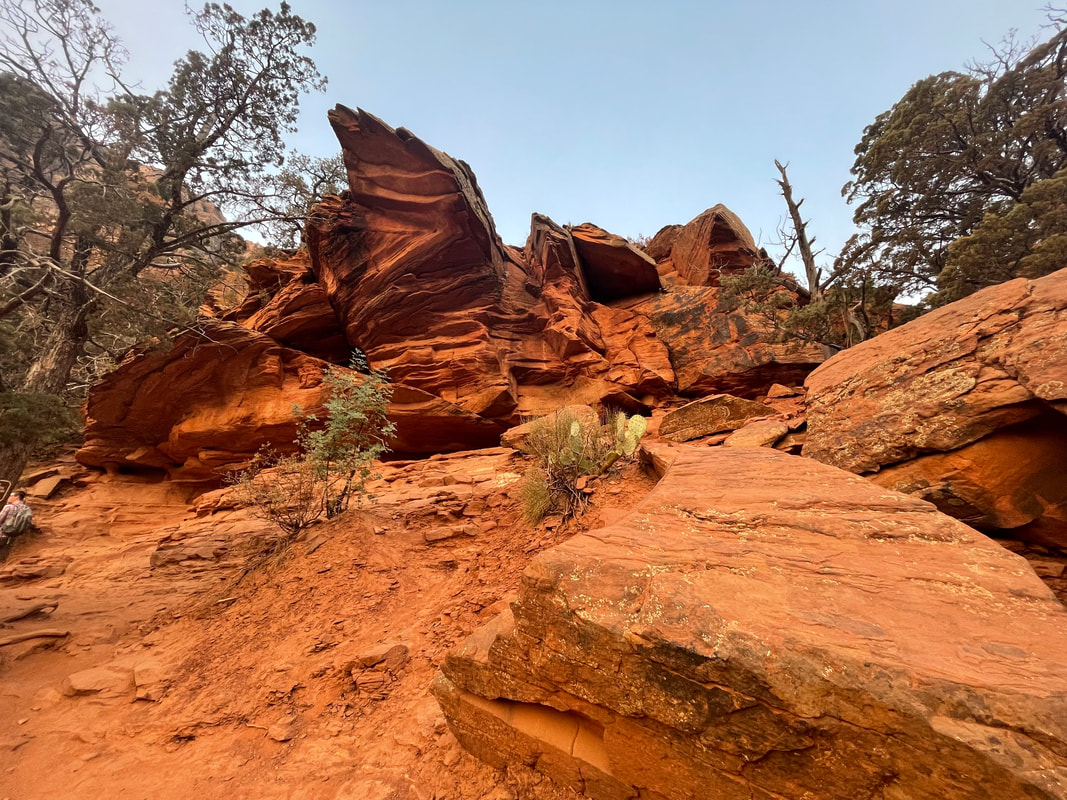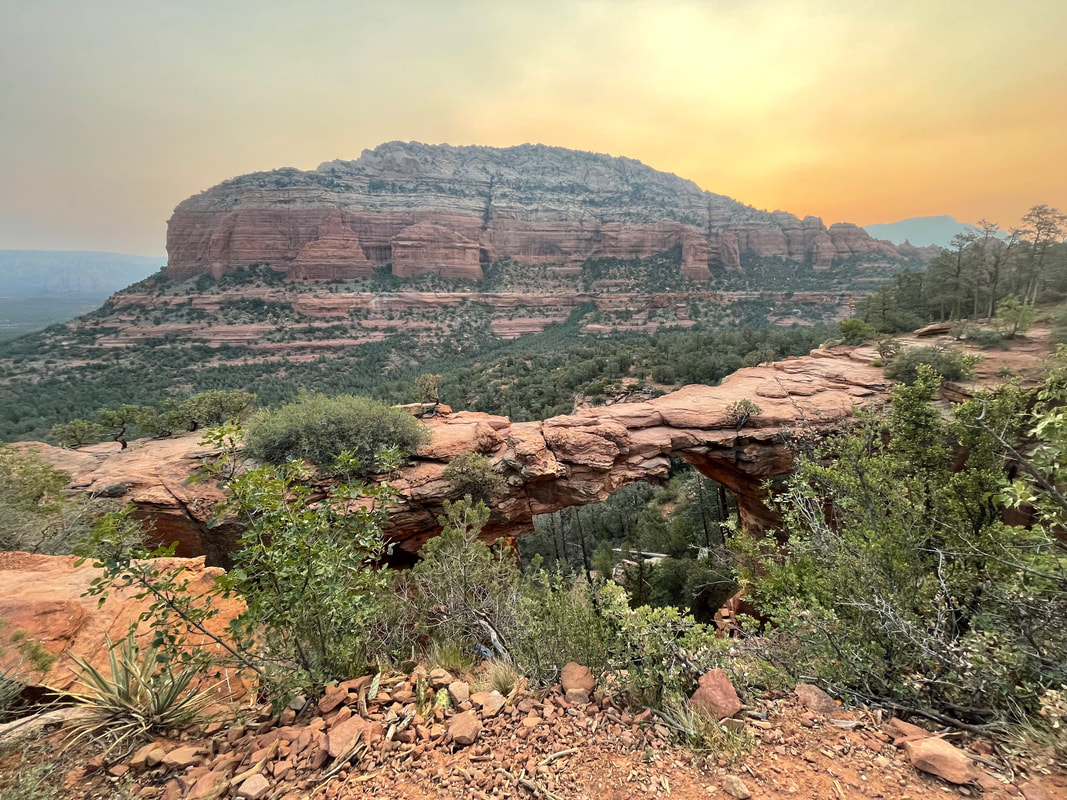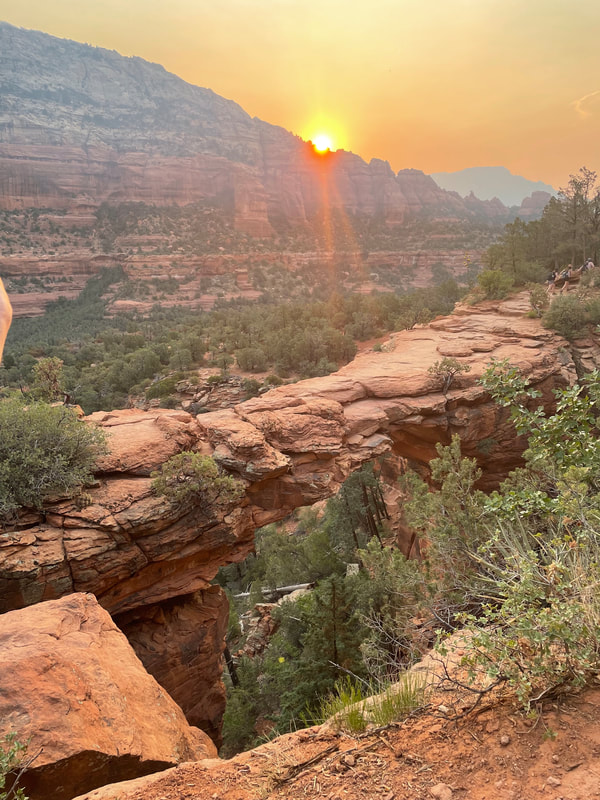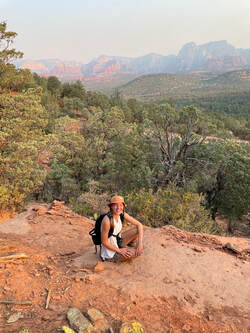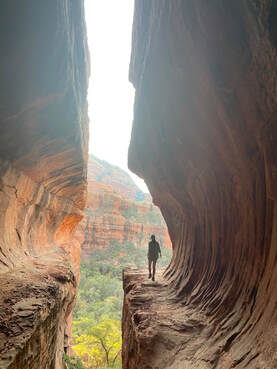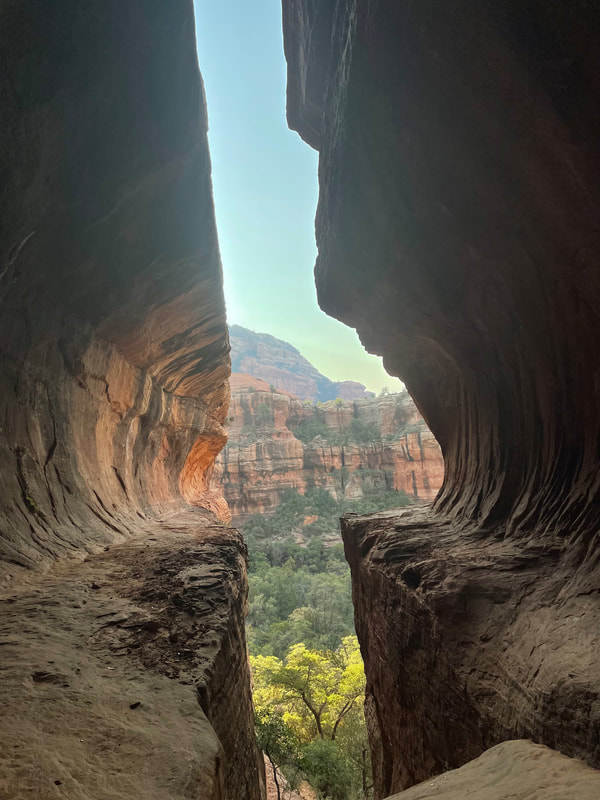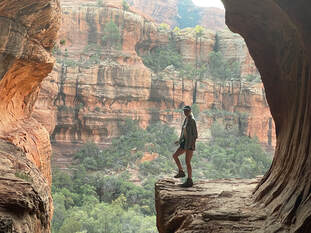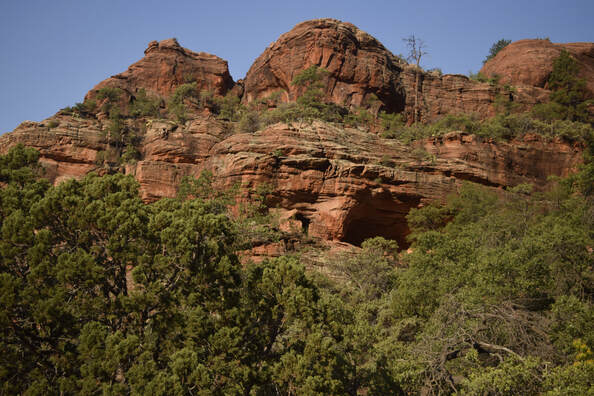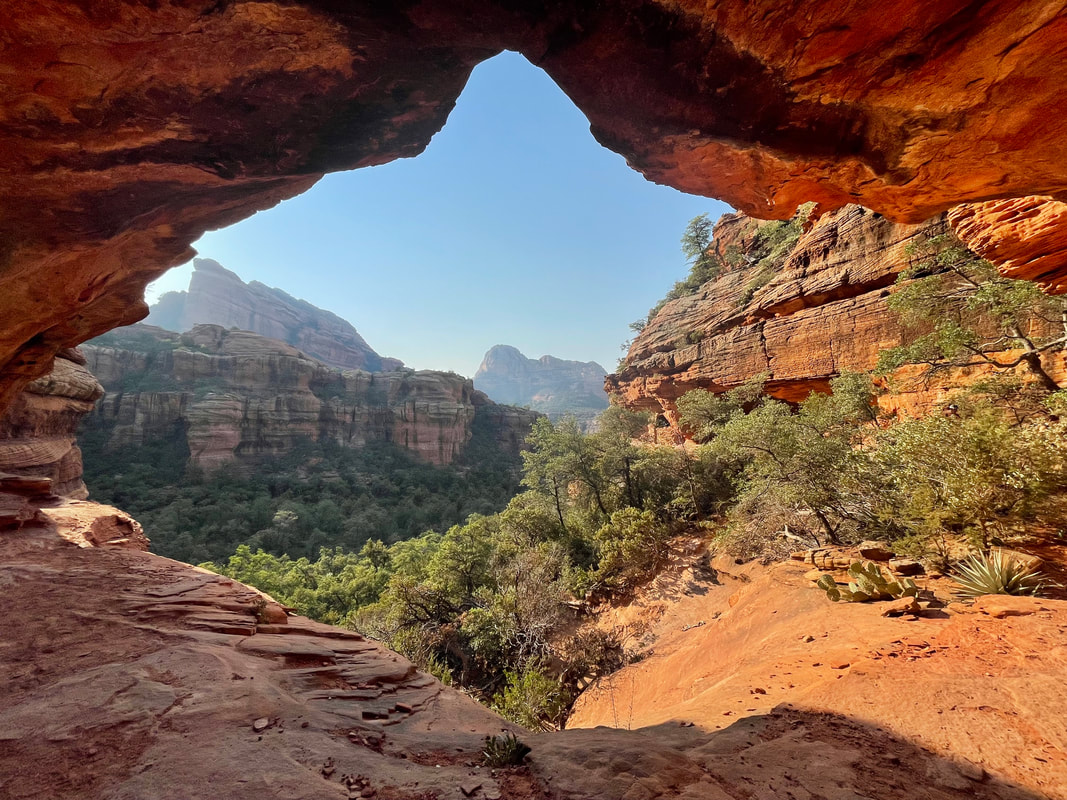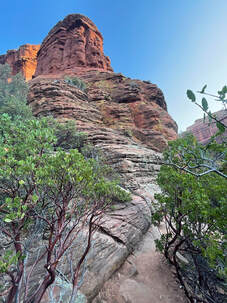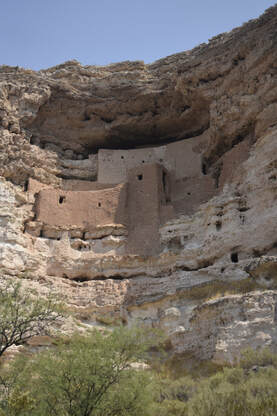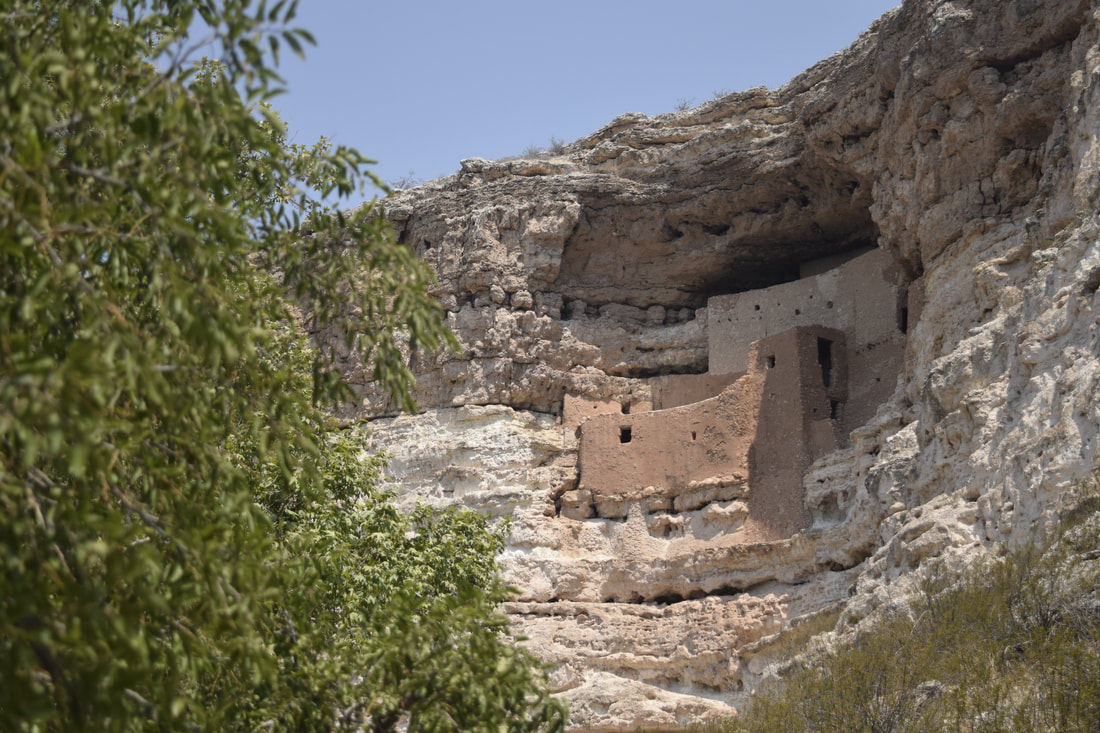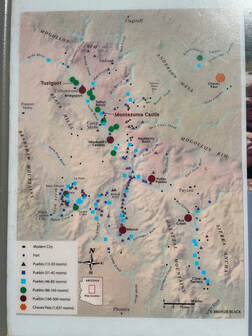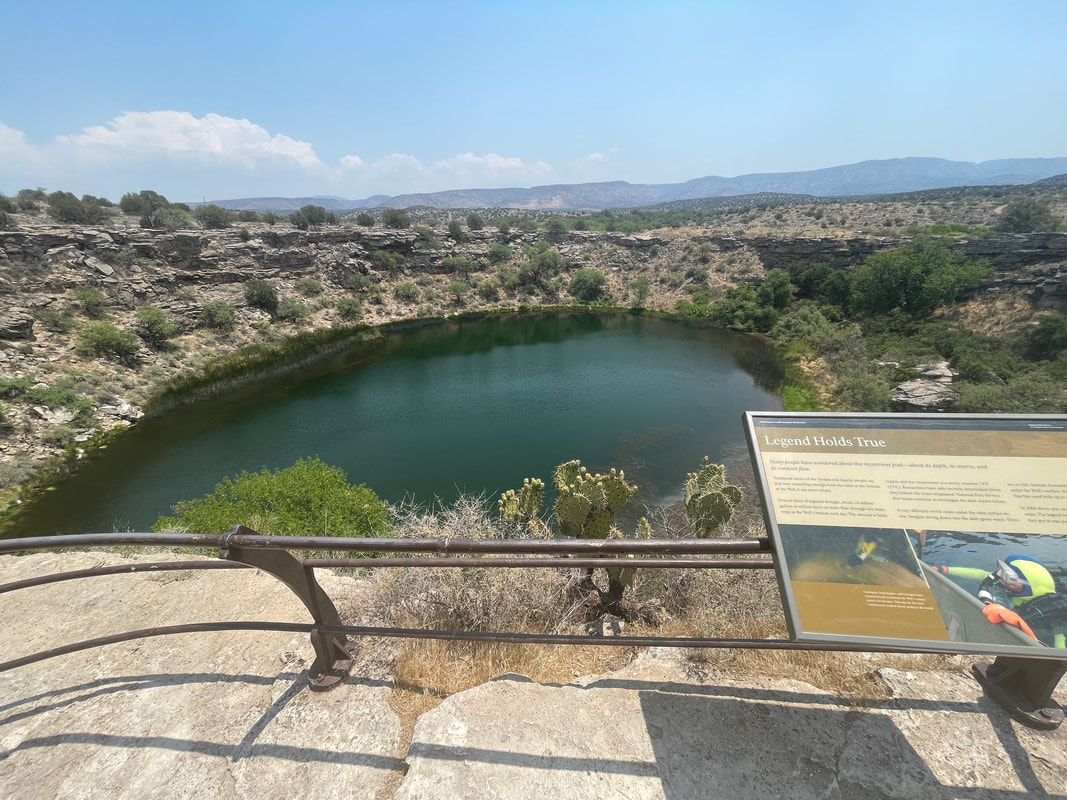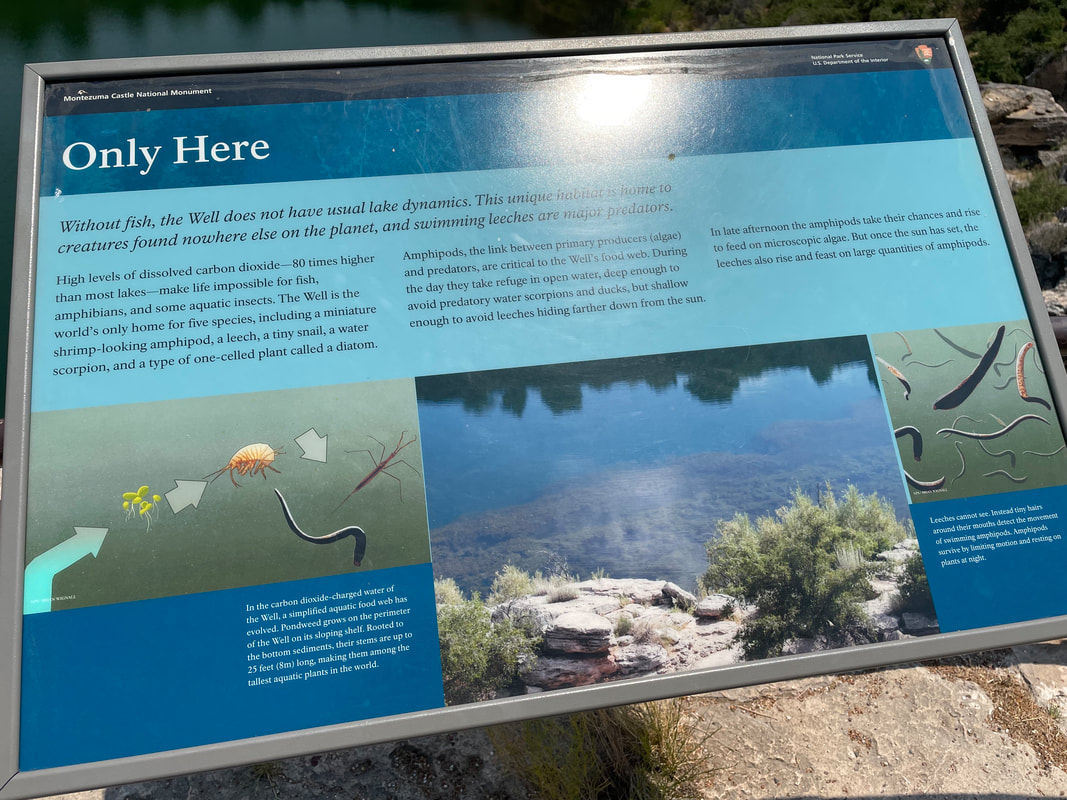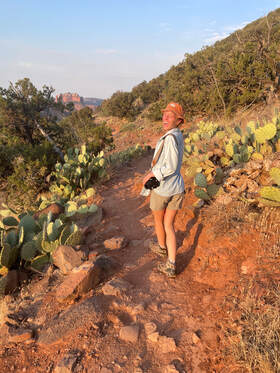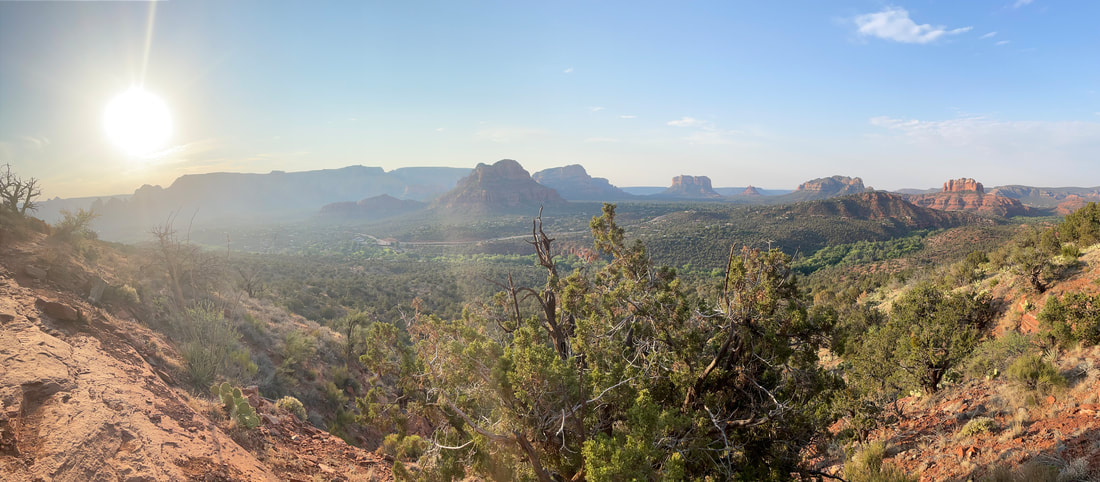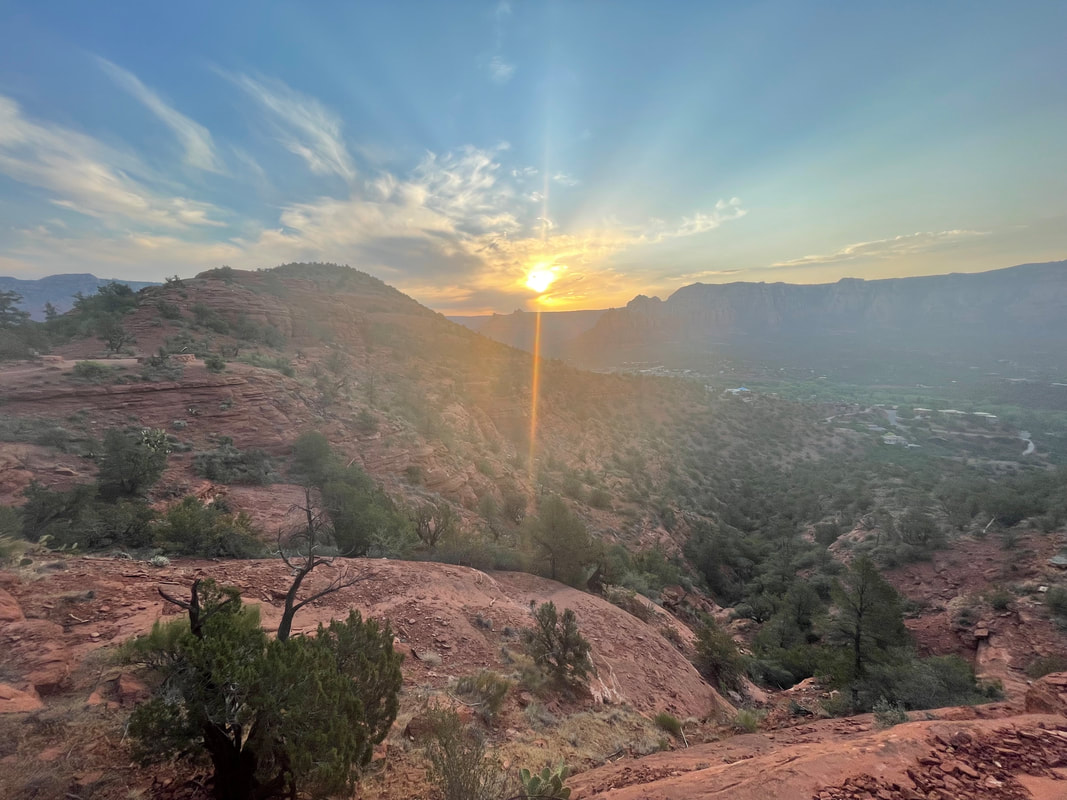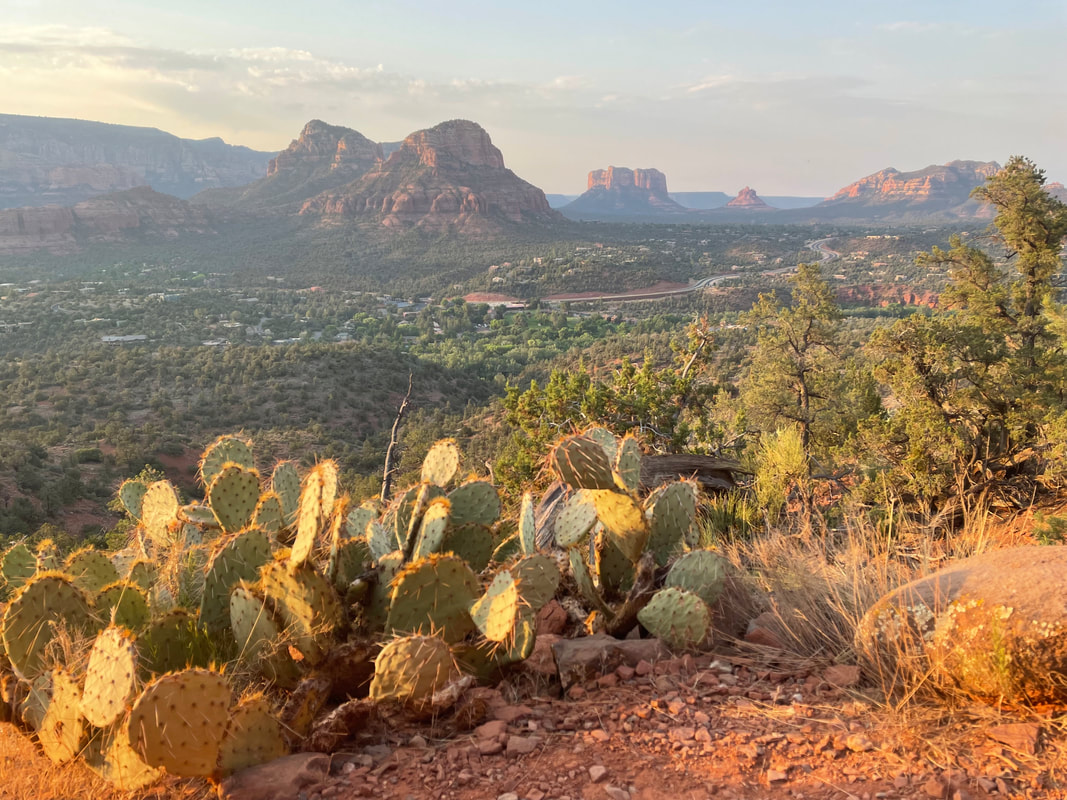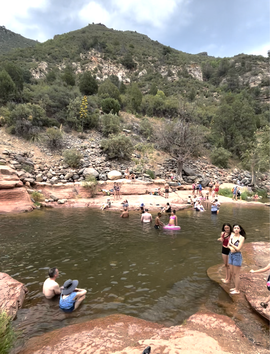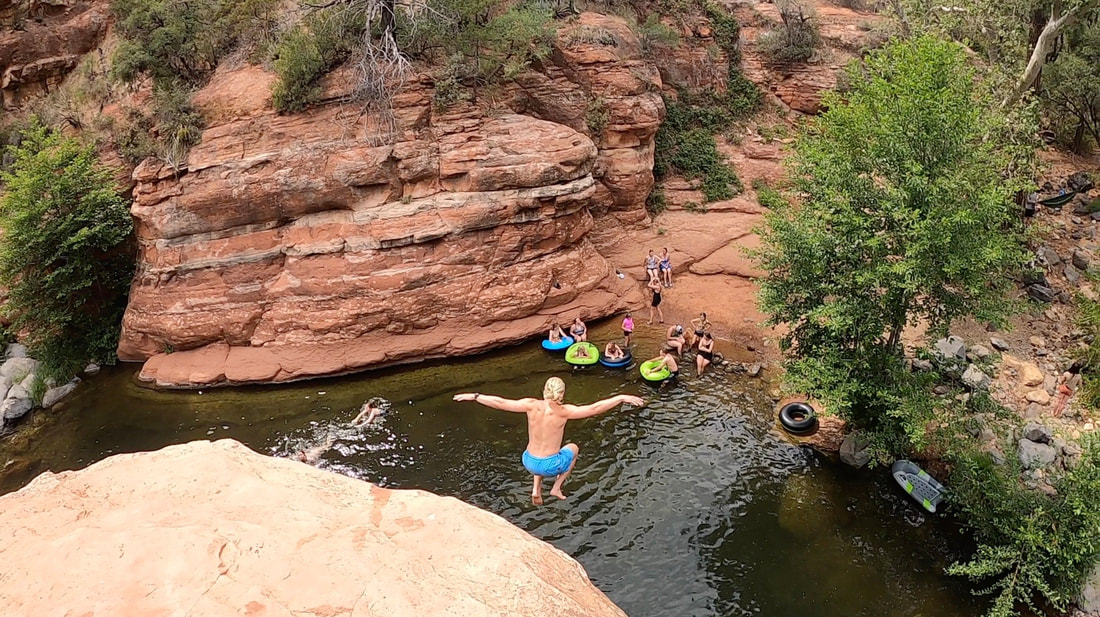We walked back down the path and made a right turn off the main trail to see a different view of the bridge. The view from underneath was, I think, more beautiful than seeing it from above. The sun was also lighting it up at just the right time so that the rocks were glowing bright red for us. It was unbelievable. After we gazed and gawked for a good while, we found a rock to sit on and do some more viewing of the landscape. We sat and looked until we realized the time and that we needed to wrap up our time in Sedona and head to our next destination, California! We saved the best hike for last, and we couldn’t have left Arizona any happier. See more from our entire trip to Sedona!
0 Comments
We began at the Boynton Canyon Trailhead and hiked roughly three miles to "The Secret Cave" also known as The Subway.
The cave isn’t really a cave at all. It is a horizontally eroded, circular space that exists between two massive, vertical rock walls. Some call it the Subway due to its similar appearance to a subway tunnel. It is truly unique and a sight to behold. Not far from the Secret Cave, there are awe-inspiring sights of a different type. Just around the corner from the cave formation, a ledge leads to ruins built by the native people of Sedona. Often referred to as cliff dwellings, these ruins consist of stacked blocks of stone constructed to enclose an area of the cliff. While walking around these rooms on a ledge overlooking the calley, I couldn’t help but to wonder about what it may have been like to call this place home. As I was thinking what it may be like to live in this beautiful canyon, I began to climb around and explore the higher cliffs. Reaching the next platform of cliffs, I stopped to hear a sound that, at first, made me question my own sanity. I though I had heard a native-sounding flute, and after a few moments of listening, I knew that I wasn’t hallucinating. After soaking up the glorious sound, I started my descent to meet the flute player. Back at the cliffs with the Secret Cave and ruins, I was greeted by the flutist. He asked how far up I’d gone and introduced himself as a Sedona local. We spoke about the serenity of the site until a loud group of people began making their way up the climb to the cave. He suggested it was time to leave given the new visitors, and I agreed. Taylor had recently joined us in conversation and the three of us made our way down to meet up with Taylor’s family. See more from our entire trip to Sedona!
Montezuma Castle is a large pueblo structure built high into the cliff face of riverside limestone rocks. This formation is believed to have been built between the years 1,110-1,400. It is one of hundreds of formations discovered along the lush 800 mile-long Verde Valley, but it is one of the best preserved. The signs in the park discuss how the construction was named by explorers long after its inhabitants had abandoned the area. They are now referred to as the Sinagua people. Sinagua means “no water” in Spanish, because the watersheds were believed to be dry when the Spanish explorers arrived. Learning about the assumed lifestyle of the time as we walked around the concrete walkways that line the park boundaries was extremely interesting. Sadly, the public can no longer explore the pueblo formations, and they can only be viewed from the ground below. What is more tragic, though, is that we learned some of the formations are recreations.
Montezuma Well is a natural limestone sinkhole filled with carbon rich water, and it is another part of the UNESCO World Heritage site. It is also believed to have served everyday and ceremonial purposes. Plus, there is a legend that a large water serpent lives inside the well. The well is the only place like this in this area, but just like Montezuma Castle there are ancient pueblos in the cliffside. Though these are much smaller and not as well preserved, they are located in the walls of the sinkhole itself. Just like before, the natural life of this area was more interesting than the ruins. The most interesting part about Montezuma Well is that the well is home to some species of life that have never been found anywhere else! There are five unique organisms that call the oxygen-deprived water home.
Both Montezuma Castle and Well were very interesting to explore and learn about. We still have so many questions about the way of life back when the people of this area flourished. It also introduced us to more ancient sites to explore the next time we are in Sedona! See more from our Sedona vacation below:
We followed the AllTrails App to keep along the trail because it was a bit difficult to find. Click here to find the route we followed!
We eventually connected to the main portion of the trail on the eastern side of the mesa and continued our loop hike. As the sun rose, the views only improved. We could eventually see all of the familiar formations of Sedona like Bell Rock, Cathedral Rock, Battlement Mesa, and Snoopy Rock! Eventually, when the trail rounded the southern and western portion of the mesa, we started walking closer to the airport. This part of the trail was not our favorite, because we had gone from wide open spaces back to short desert trees, and the trail follows close to the airport fence surrounding houses, offices, and other airport buildings. It wasn’t very nice, but it was the last bit of the trail. We eventually arrived back at the parking lot with our car. It was around 7:30 when we finished the hike. The Airport Mesa Loop Trail was a great introductory hike for us to see all of the places we would be exploring over the next few days. Read about our entire trip to Sedona, here:
We came to take a swim after a long day of exploring Montezuma Castle National Monument. Taylor knew that the park featured natural slides, but we were unaware of the park’s history and agriculture.
As we passed the apple orchards and historical buildings on our way to the creek, we realized the popularity of the park and wondered if we would be able to find a somewhat secluded place to swim.
After walking for about 15 minutes, we heard loud splashes and cheers and soon discovered people cliff jumping into a deep pool. We couldn’t wait to join. We climbed the cliff and waited our turn to jump into the pristine waters of Oak Creek. After the exhilarating dip into the water and a little time spent swimming, we realized the park would be closing soon and started making our way back to the park’s entrance. We walked back downstream to the rocks where kids were sliding down the smooth rocks, and Taylor jumped right in to join them. Taylor claimed that sliding down the rocks was more fun than cliff jumping, but I couldn’t believe it, nor did I let her prove me wrong by sliding down the rocks. We had a great few hours in this wonderful little park. Watch our video below to see how much fun we truly had! See more from our trip to Sedona: |
Talkin' 'bout Tacos:
I'm Taylor, aka Tacos! I am sharing my journeys and experiences from across the world, hoping to inspire travel and adventure in all who read! Archives
July 2024
|
